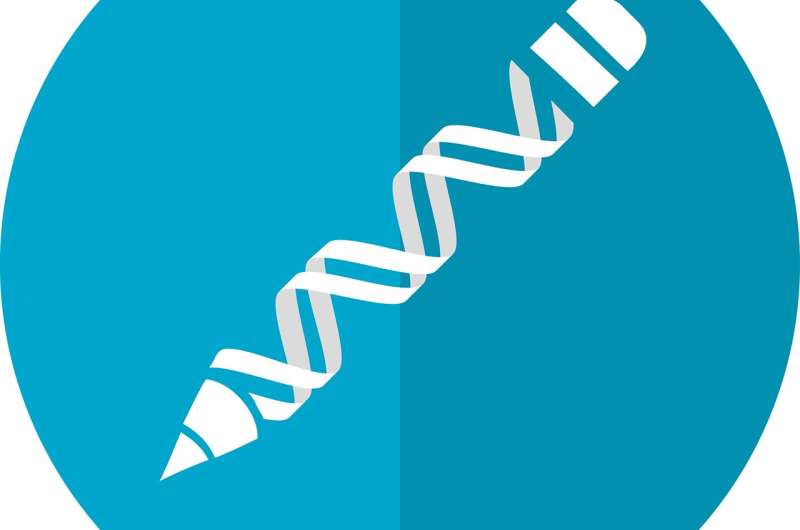Nanobodies could help CRISPR turn genes on and off

The genetic tool CRISPR has been likened to molecular scissors for its ability to snip out and replace genetic code within DNA. But CRISPR has a capability that could make it useful beyond genetic repairs. "CRISPR can precisely locate specific genes," says Lacramioara Bintu, an assistant professor of bioengineering at Stanford. "What we did was attach CRISPR to nanobodies to help it perform specific actions when it reached the right spot on DNA."
Her lab recently used this combo technique to transform CRISPR from a gene-editing scissors into a nanoscale control agent that can toggle specific genes on and off, like a light switch, to start or stop the flow of some health-related protein inside a cell.
"There are a lot of things you can't fix with scissors," Bintu says. The novel technique her team describes in the journal Nature Communications could enable researchers to explore new therapeutic applications in the field of epigenetics—which is the study of how genes behave inside cells.
As Bintu explains, every cell in the human body has the same DNA—a full complement of genes—but not every gene is switched on in every cell. Some cells have certain genes on, telling the cell to produce specific proteins. Others have those genes turned off, but others turned on. Sometimes, as with genetic diseases, things go awry in this switching. The Bintu lab's new tool has the potential to correct those mistakes.
The new tool is more complicated than scissors because ordinary CRISPR cannot turn genes on and off in a controlled manner without breaking the DNA. To make changes without harm to the DNA, CRISPR needs an assist from other large, complex proteins, known as "effectors." With the new combo tool, CRISPR finds the right gene, and the effector can flip the switch.
"But these effector molecules are usually too big to easily deliver into a cell for therapeutic use," says Ph.D. student Mike Van, first author of the paper. Further complicating matters, several effectors are usually used in combination to efficiently regulate specific cell behaviors, making the CRISPR-effectors combo even bigger, hence harder to produce and deliver.
To get around this roadblock, Bintu's team turned to smaller proteins known as nanobodies. Nanobodies don't act as stand-ins for the effectors. Instead, they act like tiny hooks that snare the needed effectors that are already swimming about within the cell. Choose the right nanobody and it will recruit the right effector for the switching job.
The new technique could be used to correct epigenetic defects without the need to combine CRISPR to large effectors. "The cells already have these proteins," explains Bintu. "We thought: Why are we reattaching them? Let's use nanobodies to do that."
At this point the technique is at the proof-of-concept stage. The next step is for the team to sort through millions of potential nanobodies, and start figuring out how to attach them to CRISPR to target specific epigenetic breakdowns.
"We just came up with a method of testing hundreds of thousands at a time," says Bintu, who hopes to further develop the technique in future experiments.
More information: Mike V. Van et al, Nanobody-mediated control of gene expression and epigenetic memory, Nature Communications (2021). DOI: 10.1038/s41467-020-20757-1
Journal information: Nature Communications
Provided by Stanford University School of Engineering



















